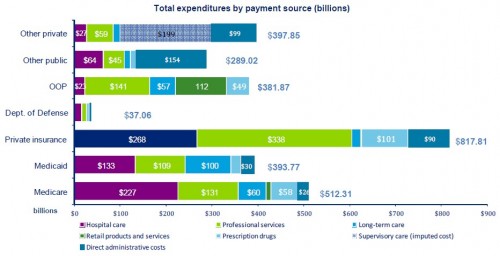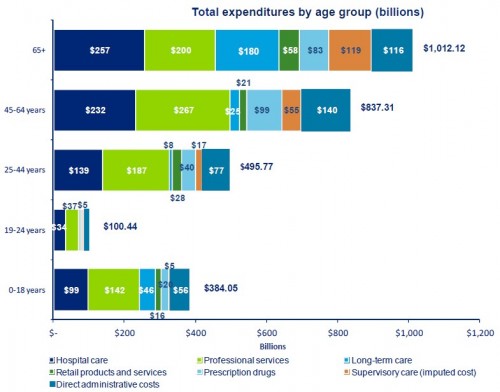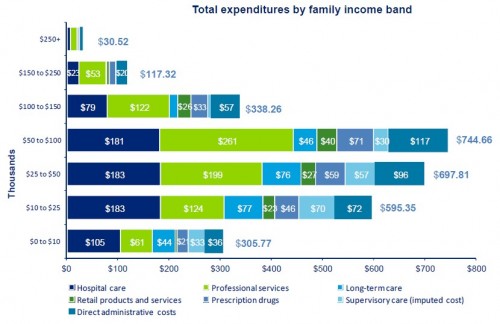Deloitte has published an analysis titled The Hidden Costs of U.S. Health Care for Consumers. I thought some of the figures were interesting, providing a visual exploration of where health care dollars go, stratified in various ways. Three are below (click to enlarge). Note: the dark blue bar for “Private insurance” in the first graph below ($268) seems to be mis-colored. I think it should be magenta, representing hospital care.
UPDATE: Noted the mis-colored bar in the first chart.





